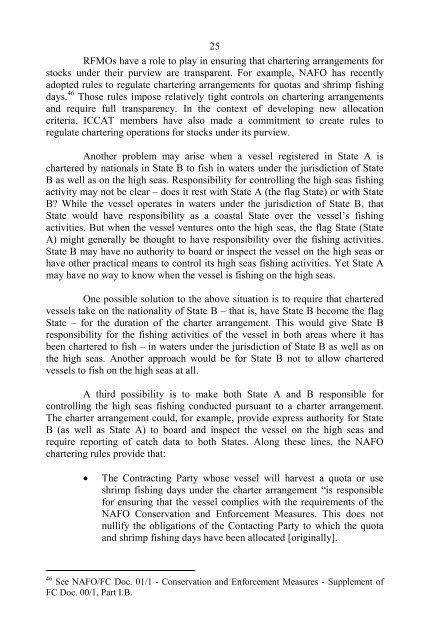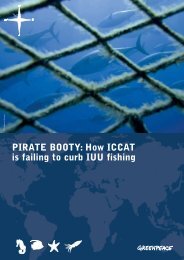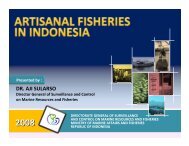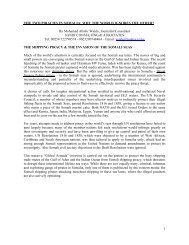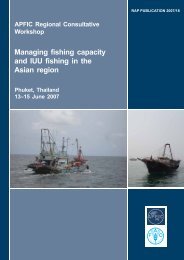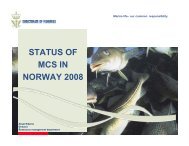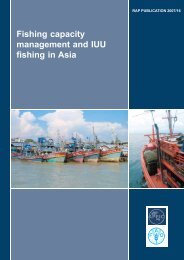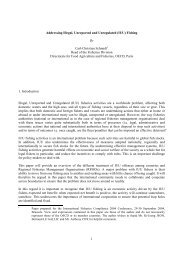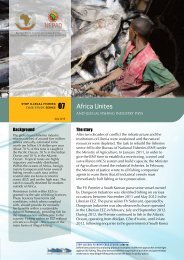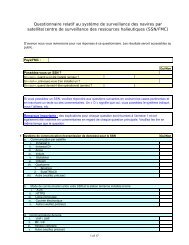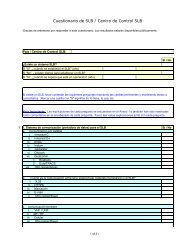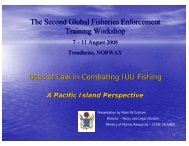Implementation of IPOA/IUU - International MCS Network
Implementation of IPOA/IUU - International MCS Network
Implementation of IPOA/IUU - International MCS Network
Create successful ePaper yourself
Turn your PDF publications into a flip-book with our unique Google optimized e-Paper software.
25RFMOs have a role to play in ensuring that chartering arrangements forstocks under their purview are transparent. For example, NAFO has recentlyadopted rules to regulate chartering arrangements for quotas and shrimp fishingdays. 46 Those rules impose relatively tight controls on chartering arrangementsand require full transparency. In the context <strong>of</strong> developing new allocationcriteria, ICCAT members have also made a commitment to create rules toregulate chartering operations for stocks under its purview.Another problem may arise when a vessel registered in State A ischartered by nationals in State B to fish in waters under the jurisdiction <strong>of</strong> StateB as well as on the high seas. Responsibility for controlling the high seas fishingactivity may not be clear – does it rest with State A (the flag State) or with StateB? While the vessel operates in waters under the jurisdiction <strong>of</strong> State B, thatState would have responsibility as a coastal State over the vessel’s fishingactivities. But when the vessel ventures onto the high seas, the flag State (StateA) might generally be thought to have responsibility over the fishing activities.State B may have no authority to board or inspect the vessel on the high seas orhave other practical means to control its high seas fishing activities. Yet State Amay have no way to know when the vessel is fishing on the high seas.One possible solution to the above situation is to require that charteredvessels take on the nationality <strong>of</strong> State B – that is, have State B become the flagState – for the duration <strong>of</strong> the charter arrangement. This would give State Bresponsibility for the fishing activities <strong>of</strong> the vessel in both areas where it hasbeen chartered to fish – in waters under the jurisdiction <strong>of</strong> State B as well as onthe high seas. Another approach would be for State B not to allow charteredvessels to fish on the high seas at all.A third possibility is to make both State A and B responsible forcontrolling the high seas fishing conducted pursuant to a charter arrangement.The charter arrangement could, for example, provide express authority for StateB (as well as State A) to board and inspect the vessel on the high seas andrequire reporting <strong>of</strong> catch data to both States. Along these lines, the NAFOchartering rules provide that:The Contracting Party whose vessel will harvest a quota or useshrimp fishing days under the charter arrangement “is responsiblefor ensuring that the vessel complies with the requirements <strong>of</strong> theNAFO Conservation and Enforcement Measures. This does notnullify the obligations <strong>of</strong> the Contacting Party to which the quotaand shrimp fishing days have been allocated [originally].46 See NAFO/FC Doc. 01/1 - Conservation and Enforcement Measures - Supplement <strong>of</strong>FC Doc. 00/1, Part I.B.


